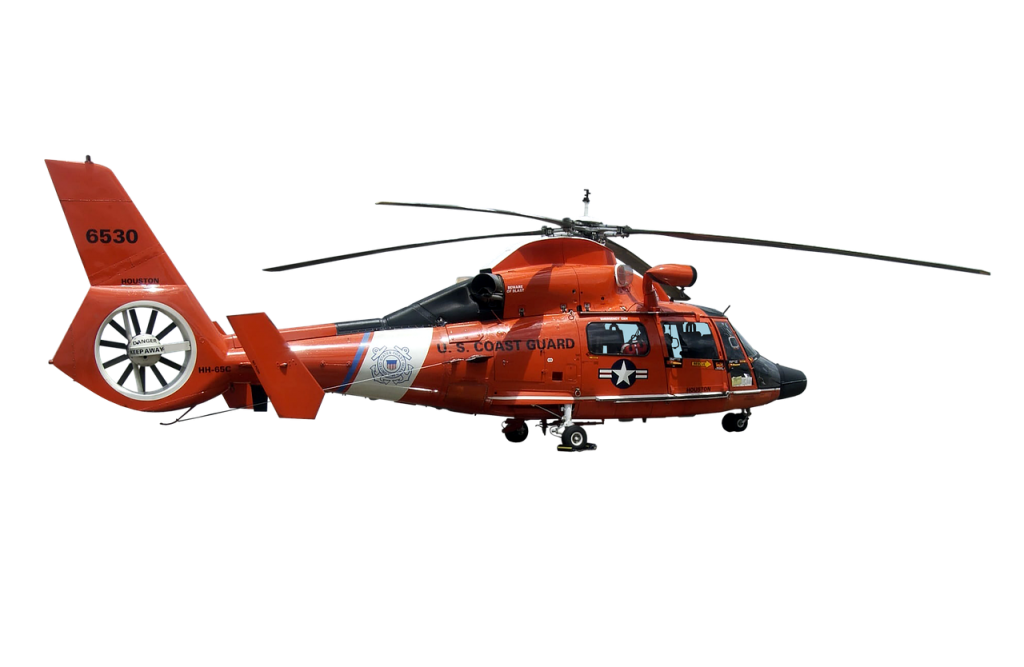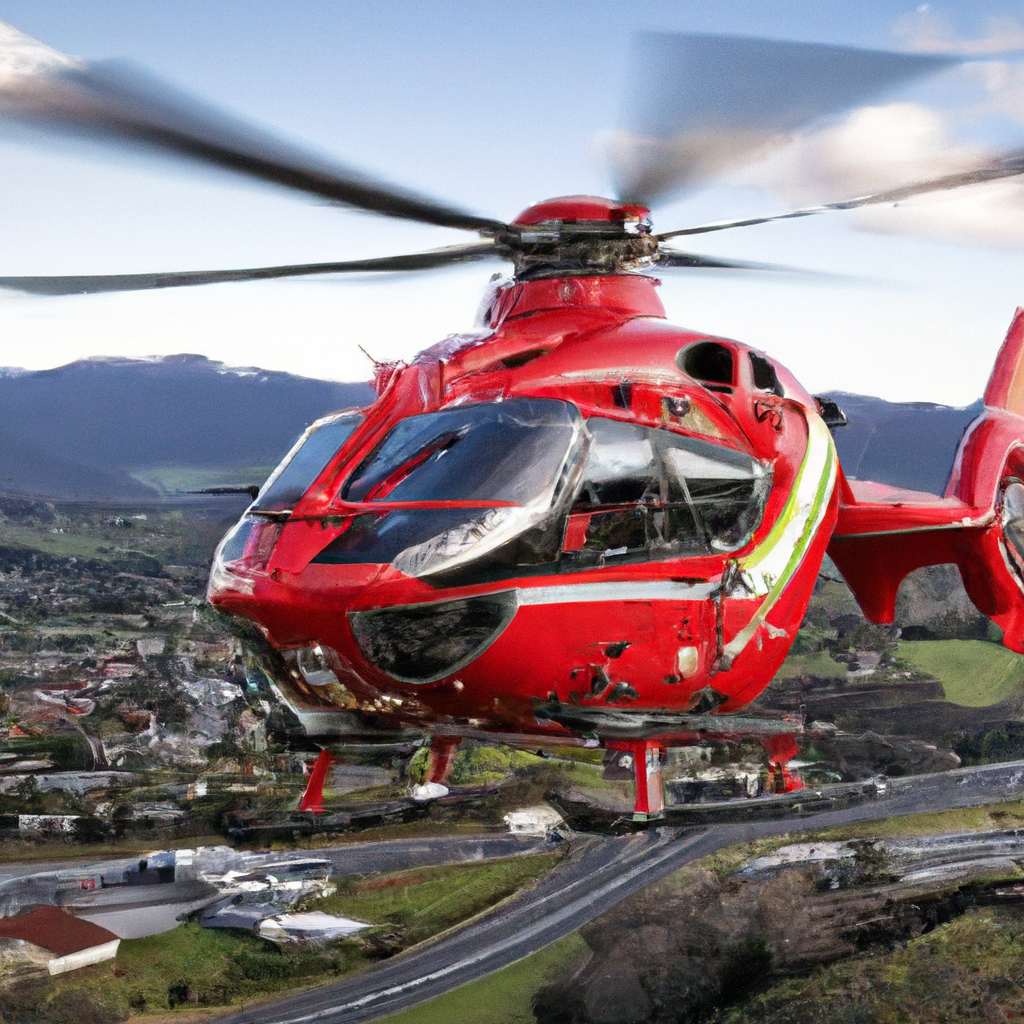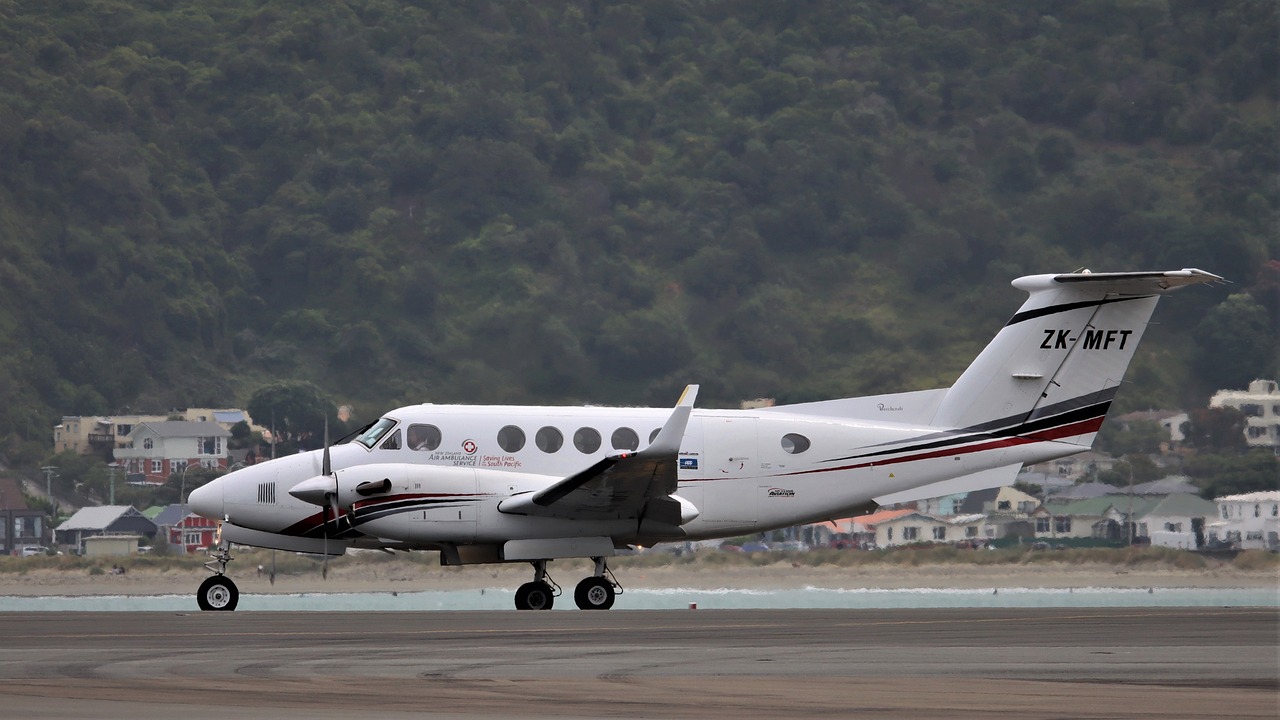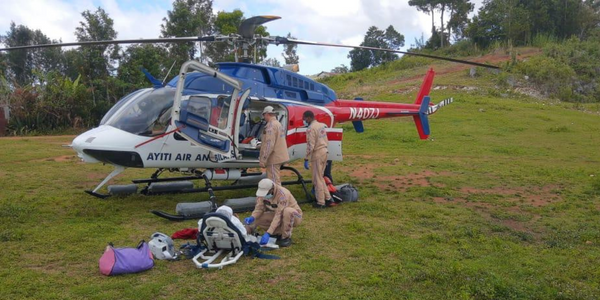Picture this: It’s a sunny day, and you’re out enjoying a hike in the mountains with your friends. Suddenly, you trip and twist your ankle, and the pain is unbearable. You quickly realize that you can’t walk and need immediate medical attention. But here’s the catch – you’re in a remote location far from any hospital. That’s where air ambulances come to the rescue. In time-sensitive emergencies like this, air ambulances can make all the difference, providing rapid transportation and critical care en route to the nearest medical facility. In this article, we’ll explore how air ambulances function and the vital role they play in saving lives during these critical moments.

The Importance of Timely Medical Assistance
In times of emergency, every second counts. That’s why timely medical assistance can often mean the difference between life and death. When faced with time-sensitive emergencies, such as severe injuries or medical conditions, it is crucial to have access to immediate and efficient medical care. This is where air ambulances come into play, playing a critical role in ensuring the swift transportation of patients to healthcare facilities. By understanding the importance of timely medical assistance, we can appreciate the invaluable services provided by air ambulances.
Understanding Time-Sensitive Emergencies
Time-sensitive emergencies refer to situations where immediate medical intervention is crucial to prevent further complications or loss of life. These emergencies can occur due to various reasons, including car accidents, heart attacks, strokes, or traumatic injuries. In such critical moments, every moment wasted in transportation can have severe implications for the patient’s health. Timely medical assistance is essential to provide prompt and appropriate medical care that maximizes the chances of a positive outcome.
The Critical Role of Air Ambulances
Air ambulances play a vital role in the timely delivery of emergency medical care. They are designed to swiftly transport patients to healthcare facilities, particularly in situations where ground transportation is not feasible or can cause substantial delays. By utilizing helicopters or fixed-wing aircraft, air ambulances can reach remote or hard-to-reach areas that are inaccessible to traditional ambulances. This accessibility can be crucial in ensuring timely medical assistance, especially in rural or mountainous regions where transportation infrastructure may be limited.
How Time Factors into Emergency Medical Care
When it comes to emergency medical care, time is of the essence. Prompt medical intervention can significantly impact a patient’s prognosis and increase their chances of survival. In critical situations, the speed at which a patient can receive appropriate medical care can make a significant difference in their outcome. Air ambulances are designed to minimize transportation time by providing rapid response and swift transportation to specialized healthcare facilities. By reducing the time it takes to reach these facilities, air ambulances enhance the chances of a positive medical outcome for patients in need.
Rapid Response and Accessibility
Air Ambulances: Faster than Ground Transportation
In time-sensitive emergencies, speed is crucial, and air ambulances have a distinct advantage over traditional ground transportation. While ground ambulances are limited by traffic congestion, road conditions, and geographical barriers, air ambulances can rapidly bypass these obstacles. With their ability to fly directly to a healthcare facility, air ambulances can reduce transportation time significantly, especially in heavily congested urban areas. The ability to bypass traffic and other ground-level obstacles allows air ambulances to provide faster response times and ensure patients receive the urgent care they need.
Overcoming Geographical Barriers
One of the challenges faced by traditional ambulances is the difficulty of reaching remote or geographically challenging areas. Mountainous regions, islands, or areas with limited road access can pose significant obstacles to ground transportation. In these scenarios, air ambulances offer a lifeline by providing a means of transportation that can overcome geographical barriers. By utilizing helicopters or fixed-wing aircraft, air ambulances can access areas that would otherwise be inaccessible or take a significant amount of time to reach. This enhances accessibility and ensures that individuals in remote regions receive timely medical assistance when every moment counts.
Enhancing Accessibility in Remote Areas
Remote areas often face challenges in accessing healthcare facilities, particularly in emergency situations. When ground transportation options are limited, air ambulances serve as a vital link between patients and specialized medical care. By providing rapid transport from remote or rural locations to healthcare facilities, air ambulances bridge the gap in accessibility, ensuring that individuals in even the most remote areas have access to timely and life-saving medical assistance. This not only saves lives but also helps alleviate the burden on local healthcare systems by distributing patients to specialized facilities efficiently.

Equipped for Emergency Care
Advanced Medical Equipment on Air Ambulances
Air ambulances are equipped with advanced medical equipment and technology to provide emergency medical care during transportation. These aircraft are essentially flying emergency rooms, equipped with state-of-the-art monitoring devices, medical supplies, and life-saving equipment. From defibrillators and ventilators to cardiac monitors and intravenous pumps, air ambulances are equipped with the necessary tools to manage a wide range of medical emergencies. This level of equipment ensures that patients receive timely and critical care while being transported to a healthcare facility.
Expert Medical Personnel on Board
Air ambulances are staffed by highly trained medical professionals, including flight nurses and emergency medical technicians (EMTs). These individuals possess specialized training and experience in providing emergency medical care in the unique environment of an aircraft. Their expertise enables them to assess and stabilize patients during transport, administering necessary treatments or interventions to ensure the best possible medical outcome. Having expert medical personnel on board air ambulances ensures that patients receive the same level of care during transportation as they would in a traditional healthcare setting.
Transporting Patients Safely and Comfortably
In addition to providing emergency medical care, air ambulances prioritize the safety and comfort of patients during transport. These aircraft are designed to accommodate patients in need of critical care, ensuring stability and safety throughout the journey. They are equipped with features such as specialized stretchers, patient monitors, and climate control systems to maintain optimal conditions for patients. The combination of advanced medical equipment and patient-focused design ensures that patients can be transported safely and comfortably, minimizing any further complications during the journey.
Onboard Medical Capabilities
Life-Saving Interventions in the Air
Air ambulances are equipped to perform life-saving interventions during transport, ensuring that patients receive immediate medical attention when necessary. In situations such as cardiac arrest or severe trauma, prompt intervention can be critical in saving a patient’s life. Air ambulances are equipped with the necessary equipment and medications to perform these interventions, including advanced cardiac life support (ACLS) protocols, airway management tools, and medications to stabilize vital signs. This level of immediate medical care in the air can significantly increase the chances of a positive outcome for patients in critical conditions.
Monitoring and Stabilizing Critical Patients
During transport, air ambulances continuously monitor and stabilize critical patients to ensure their condition remains stable and prevent any further deterioration. Advanced monitoring systems track vital signs such as heart rate, blood pressure, and oxygen saturation, allowing medical personnel to quickly identify and respond to any changes. Should a patient’s condition worsen during transport, air ambulances are equipped to provide immediate interventions and treatments to stabilize the patient until arrival at a healthcare facility. This constant monitoring and proactive approach to patient care help ensure the best possible medical outcome during transport.
Administering Medications and Emergency Treatments
Air ambulances are stocked with a wide range of medications and emergency treatments to address various medical conditions or emergencies that may arise during transport. Flight nurses and EMTs on board are trained in medication administration and can administer necessary drugs promptly and effectively. This capability allows for the immediate management of pain, seizures, allergic reactions, or other medical emergencies, ensuring that patients receive the care they need while en route to a healthcare facility. The availability of medications and emergency treatments onboard air ambulances further enhances the level of care and response time provided during transport.

Specially Trained Medical Teams
Understanding the Role of Flight Nurses
Flight nurses are highly skilled medical professionals who are specially trained to provide emergency medical care in the unique environment of air ambulances. These nurses possess additional training and certifications, allowing them to manage critical patients during transport effectively. Their role includes assessing and monitoring patients, administering medications, performing interventions when necessary, and collaborating with other medical personnel on board. Flight nurses bring a wealth of knowledge and experience to air ambulances, ensuring that patients receive the highest level of care during their journey.
Emergency Medical Technicians (EMTs) in Air Ambulances
Emergency Medical Technicians (EMTs) serve as crucial members of air ambulance teams, working collaboratively with flight nurses and other medical personnel. EMTs possess specialized training in pre-hospital care and are responsible for patient assessment, medical interventions, and general patient care during transport. Their expertise in managing emergencies and providing basic life support measures ensures that patients receive the appropriate care while en route to a healthcare facility. The presence of EMTs on board air ambulances enhances the safety and efficiency of medical care provided during transport.
Collaboration with Local Medical Teams
Air ambulance crews work in close collaboration with local medical teams, ensuring seamless continuity of care for patients. Upon arrival at a healthcare facility, air ambulance personnel hand over the patient to the receiving medical team, providing them with detailed reports on the patient’s condition, interventions performed, and ongoing treatments. This collaboration ensures that the receiving medical team has all the necessary information to continue providing timely and appropriate care. By integrating with local medical teams, air ambulances contribute to a coordinated and comprehensive approach to emergency medical care.
Seamless Coordination and Communication
Efficient Communication Systems on Air Ambulances
Effective communication is vital during emergency medical transport, and air ambulances are equipped with advanced communication systems to ensure constant connectivity. These systems allow medical personnel on board to communicate with ground medical services, receiving facilities, and other relevant parties. Clear and accurate communication enables the coordination of patient care, provides real-time updates on patient condition, and facilitates the timely availability of necessary medical resources. The efficient communication systems on air ambulances enhance coordination and enhance the overall quality and safety of patient transport.
Coordination with Ground Medical Services
Air ambulances work closely with ground medical services to ensure a seamless transfer of patients from the scene of an emergency to the air ambulance and, ultimately, to a healthcare facility. Ground medical services play a critical role in stabilizing patients before air transportation, providing initial medical care, and facilitating a smooth transition to the air ambulance crew. By coordinating efforts and sharing crucial information, ground medical services and air ambulances ensure that patients receive continuous care throughout the entire transport process.
Ensuring Effective Data Transfer and Medical History Access
During emergency situations, access to a patient’s medical history and relevant data can significantly impact the quality of care provided. Air ambulances employ systems and technologies that allow for the effective transfer of patient data, ensuring that receiving facilities have the necessary information to provide appropriate treatment upon arrival. This data transfer may include medical records, test results, allergies, or pre-existing conditions. By having access to this comprehensive patient information, receiving facilities can better tailor their care and improve patient outcomes.

Air Ambulance Dispatch and Operations
Emergency Call Centers and Dispatch Protocols
Air ambulance services typically operate through dedicated emergency call centers, where calls for assistance are received and dispatched accordingly. These call centers are staffed by trained professionals who assess the severity of each situation and allocate appropriate resources, including air ambulances. Dispatch protocols prioritize time-sensitive emergencies, ensuring that patients in critical condition receive prompt attention and resources are efficiently allocated. Through effective call center operations and dispatch protocols, air ambulances can respond rapidly to emergencies and provide immediate assistance to those in need.
Rapid Activation and Deployment of Air Ambulances
Time is of the essence in emergency situations, and air ambulance services place high emphasis on rapid activation and deployment. Air ambulance crews are on standby, ready to respond to calls for assistance at a moment’s notice. Once a call is received, crews are able to quickly mobilize, ensuring that the aircraft is ready for immediate takeoff. By streamlining activation and deployment procedures, air ambulance services are able to minimize response time, maximizing the chances of a positive outcome for patients requiring urgent medical care.
Navigation and Air Traffic Considerations
Safe and efficient navigation is crucial for air ambulances, particularly during times of emergency. Flight crews are highly skilled in navigating airspace, ensuring that air ambulances can reach their destination swiftly and safely. They work closely with air traffic control to navigate congested airspace, prioritize clearance, and minimize any potential delays. By effectively managing air traffic considerations, air ambulances are able to optimize transport time and ensure a smooth and uninterrupted journey for patients in need.
Cost Considerations and Insurance Coverage
Evaluating the Financial Implications of Air Ambulance Services
While air ambulance services are invaluable in emergency situations, it is essential to consider the financial implications of utilizing these services. Air ambulance transportation can be costly, and it is important for individuals to be aware of potential expenses. Factors that can affect the cost include distance traveled, type of aircraft utilized, and the level of medical care provided. Understanding these considerations can help individuals evaluate their medical needs, insurance coverage, and financial readiness in the event of an emergency where air ambulance services may be necessary.
Insurance Coverage for Air Ambulance Transport
Insurance coverage varies concerning air ambulance transport, and it is important to review individual policies to determine eligibility and coverage limits. Some insurance plans may cover a portion or the full cost of air ambulance transport in certain situations. It is crucial for individuals to familiarize themselves with the terms, conditions, and limitations of their insurance coverage, ensuring that they are adequately protected in times of emergency. Consulting with insurance providers or insurance brokers can provide further clarity on coverage and help individuals make informed decisions regarding their health insurance needs.
Availability of Government and Nonprofit Assistance Programs
In certain cases, government and nonprofit assistance programs may be available to help individuals who require air ambulance transport but are unable to afford the associated costs. These programs may offer financial assistance or discounted rates based on individual circumstances. It is essential to research and explore available options in advance, ensuring that individuals understand the criteria and application process for these programs. By proactively seeking information and assistance, individuals can better prepare for potential emergencies and ensure that they have the necessary resources to access air ambulance services when needed.

Training and Accreditation of Air Ambulance Crew
Rigorous Training and Certification Requirements
The crew of air ambulances undergoes rigorous training and certification programs to ensure their competence in providing emergency medical care. Pilots, flight nurses, and EMTs all receive specialized training specific to air ambulance operations. This training encompasses various aspects, including flight safety, emergency medical care protocols, and teamwork skills. By meeting these training and certification requirements, air ambulance personnel demonstrate their commitment to providing the highest standard of care during emergency medical transport.
Continuing Education for Air Medical Personnel
Continuous learning and professional development are essential for air medical personnel to stay updated with the latest advancements in emergency medical care. Air ambulance crews participate in ongoing training and education programs, enabling them to enhance their skills and stay informed about the latest medical practices and technologies. Continued education ensures that air medical personnel are equipped with the most up-to-date knowledge and techniques, enabling them to deliver the best possible care for patients in time-sensitive emergencies.
Accreditation and Quality Assurance Practices
To ensure the highest level of safety and quality in air ambulance operations, accreditation and quality assurance practices are in place. Accreditation organizations evaluate air ambulance providers to ensure compliance with industry standards and protocols. These evaluations encompass various areas, including crew training, equipment quality, safety protocols, and patient care standards. By obtaining accreditation, air ambulance providers demonstrate their commitment to delivering excellent care and meeting the industry’s highest standards of quality and safety.
The Future of Air Ambulances
Advancements in Technology and Equipment
As technology continues to advance, air ambulances are poised to benefit from innovations that enhance patient care and efficiency. These advancements may include improved medical equipment and monitoring systems, enabling more accurate patient assessment and treatment during transport. Additionally, technological innovations in aircraft design and navigation systems may further optimize air ambulance operations, reducing response times and increasing overall safety. Through the integration of cutting-edge technology, the future of air ambulances promises to enhance the delivery of timely emergency medical care.
Integration with Telemedicine and Remote Diagnosis
The integration of air ambulances with telemedicine and remote diagnosis capabilities holds tremendous potential for improving patient outcomes. Telemedicine allows medical professionals on board air ambulances to consult with specialists in real-time, receiving guidance and expertise remotely. This collaboration enhances the level of care provided during transport, allowing for specialized medical attention without the delay caused by physically transferring patients. The integration of telemedicine and remote diagnosis enables air ambulances to become even more effective in delivering timely and appropriate emergency medical care.
Innovations in Drone-Based Medical Transport
The emergence of drone technology presents unique opportunities for the future of air medical transport. Drones have the potential to provide rapid response and accessibility in situations where traditional aircraft may face challenges. By utilizing drones, medical supplies, medications, or even small medical devices can be swiftly delivered to remote or hard-to-reach areas. Drone-based medical transport may play a crucial role in situations where time is of the essence or where ground transportation is not feasible. As drone technology advances and regulations evolve, the integration of drones into air medical transport holds significant promise for enhancing emergency medical services.



